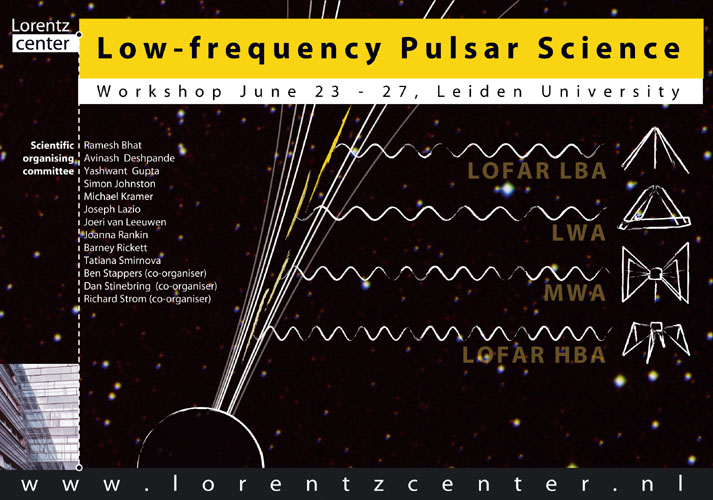Daily Image
17-06-2008Low-frequency pulsar science
| Submitter: | Joeri van Leeuwen |
| Description: | Workshop from 23-27 June, Lorentz Center Leiden: Radio pulsars are not only fascinating objects in their own right, they are also versatile probes of fundamental physics and astrophysics. Their signal strength often peaks in the 100-200 MHz range, and there are several intrinsic pulse phenomena that get stronger at low radio frequencies. This is the frequency range being explored by several large-aperture telescopes under construction or beginning operation, including the LOFAR array in the Netherlands. Thus, it is timely to have a meeting to explore the new pulsar science that can be done with the greatly improved instrumentation in this frequency range. The main scientific areas of the workshop are: 1) Searching for new pulsars and characterizing the Galactic distribution 2) Exploring the physics of pulsar radio emission 3) Probing the interstellar medium and the Galactic magnetic field with pulsars All three of these areas have seen significant advances in the last several years, and low-frequency work has been, and will continue to be, crucial to these advances. 1) The extreme sensitivity of these instruments in the frequency range where pulsar flux tends to peak ensures that surveys with these instruments will greatly increase the known population. The wide fields of view mean that they will also be particularly good at increasing the population of the recently discovered intermittent pulsars (RRATs and related objects). 2) The increased sensitivity of these new instruments combined with the tendency for higher modulation means that they may revolutionize our understanding of the single pulse emission from radio pulsars and in particular millisecond pulsars. 3) Pulsar scintillation studies are excellent probes of the interstellar medium and have become increasingly detailed in the last several years. Studying the magnetic field structure of the Galaxy through Faraday rotation work is a key goal of these instruments. In both cases the low frequencies provide a unique probe of the local environment. |
| Copyright: | JvL |
| Tweet |  |
